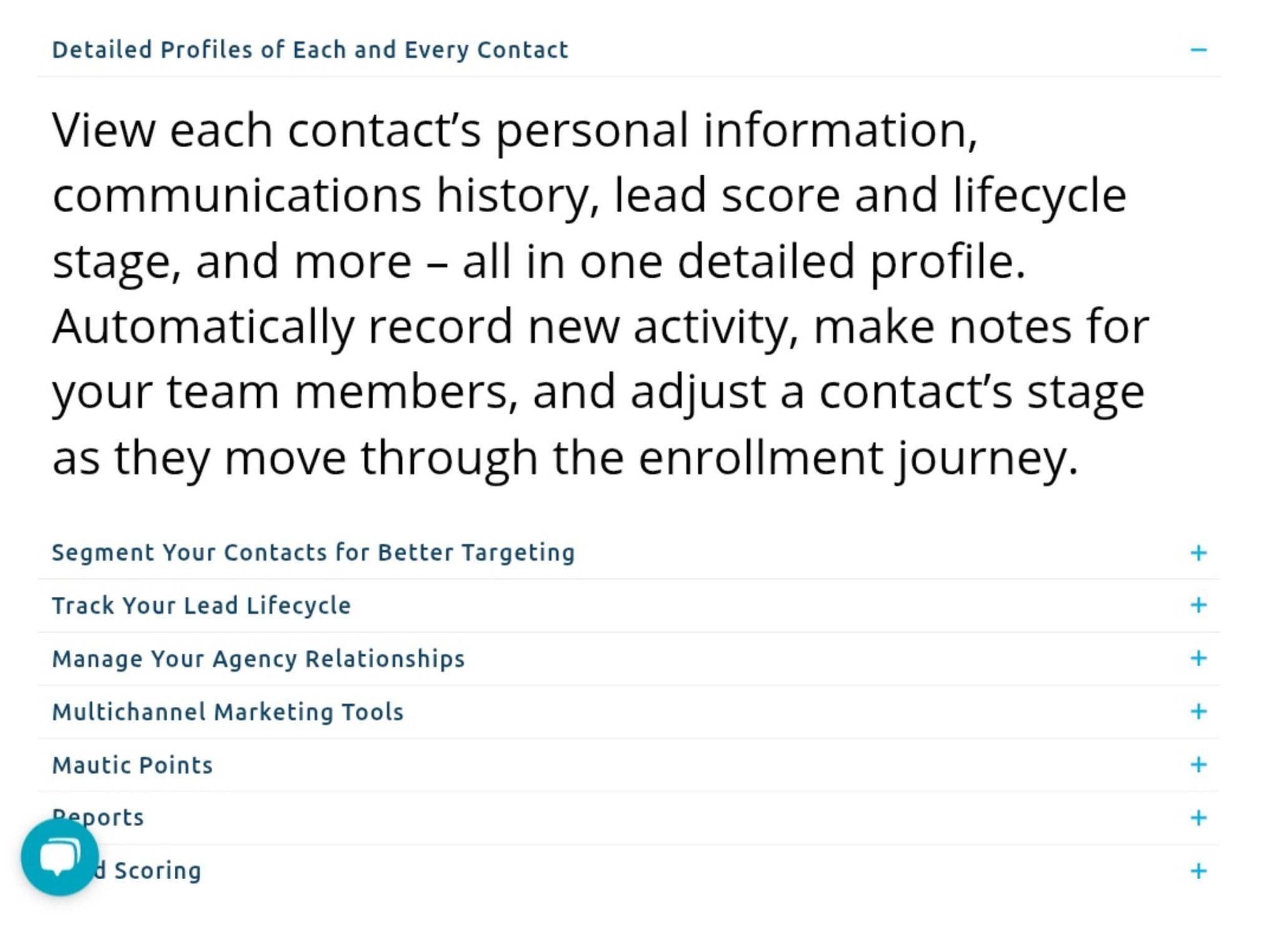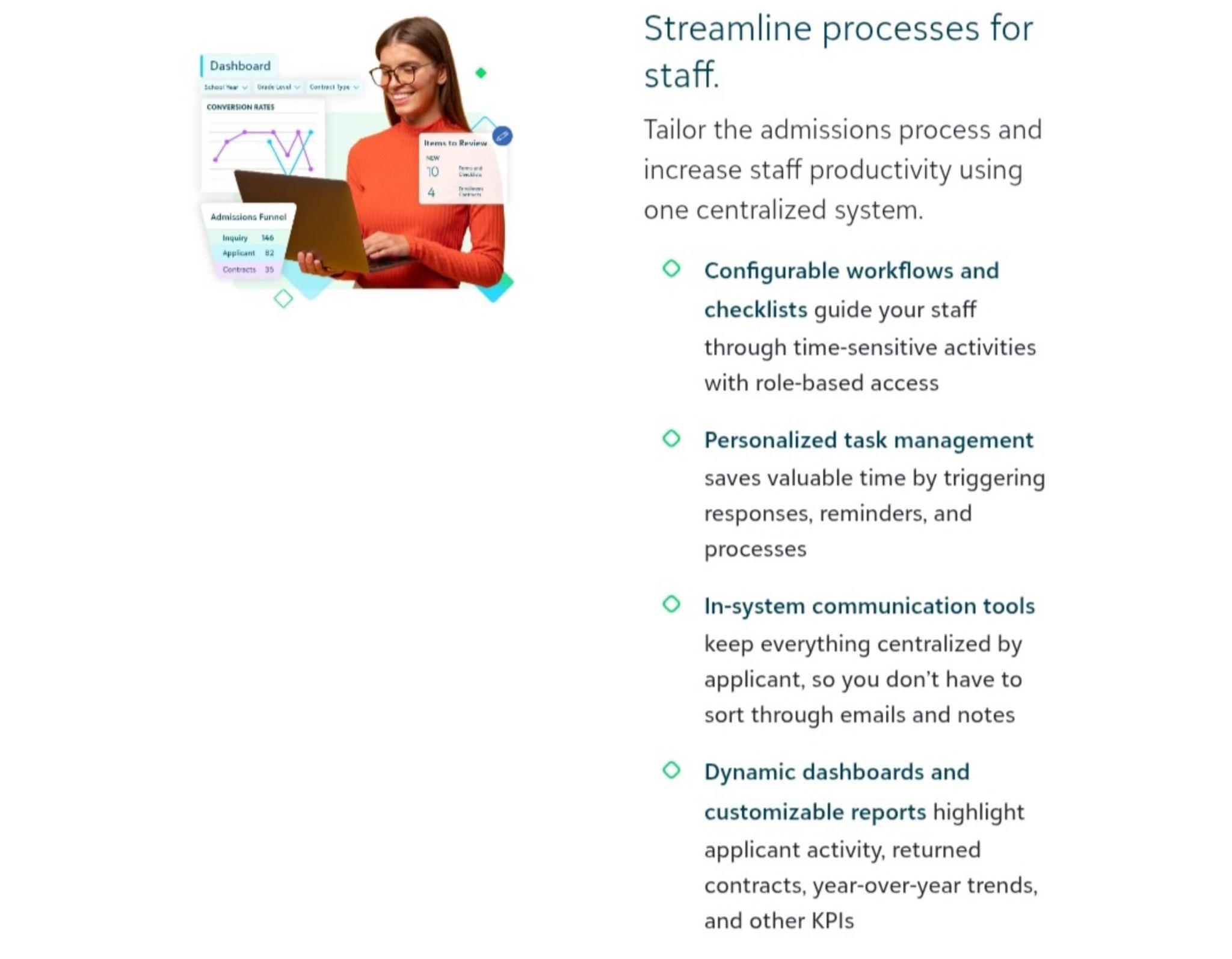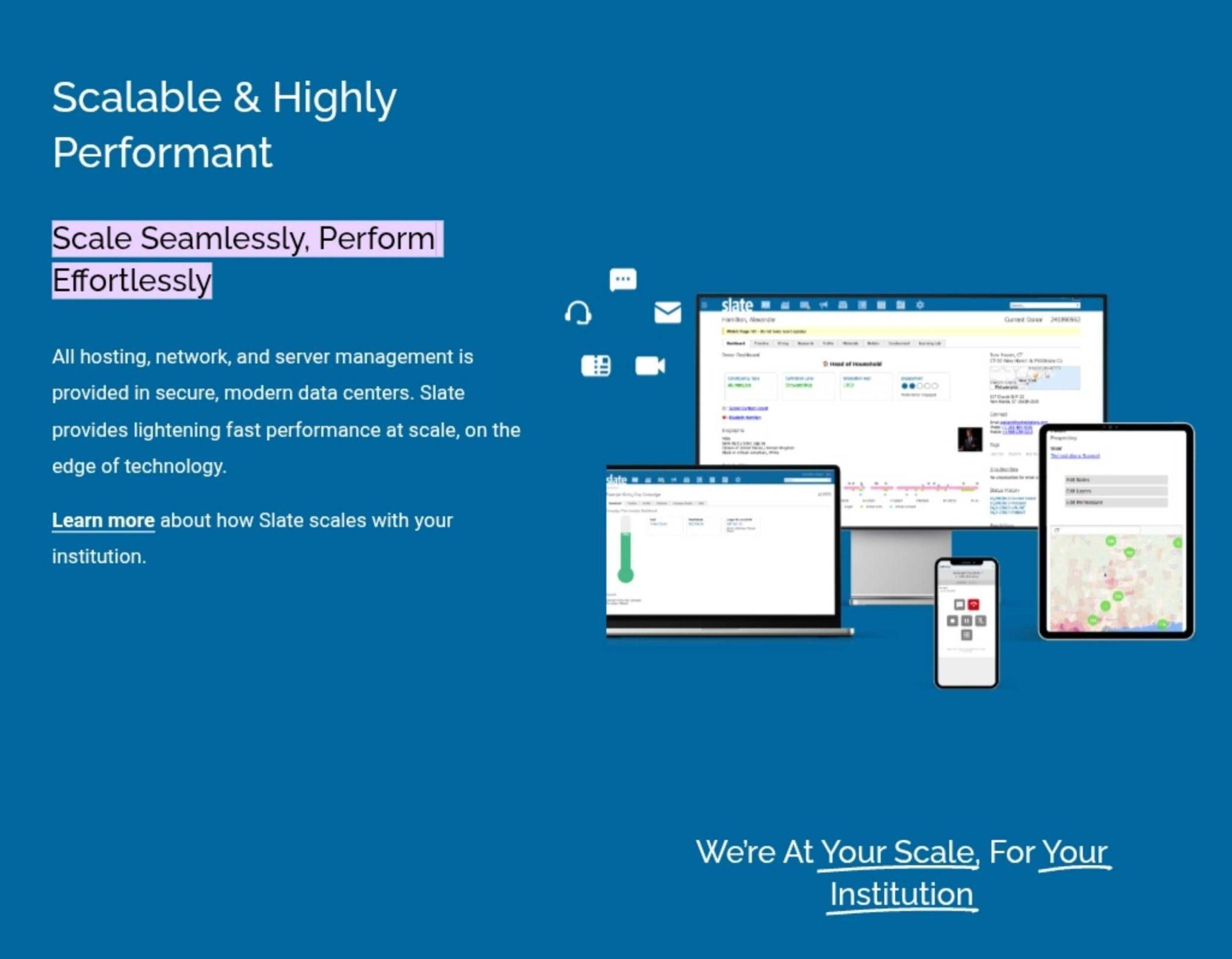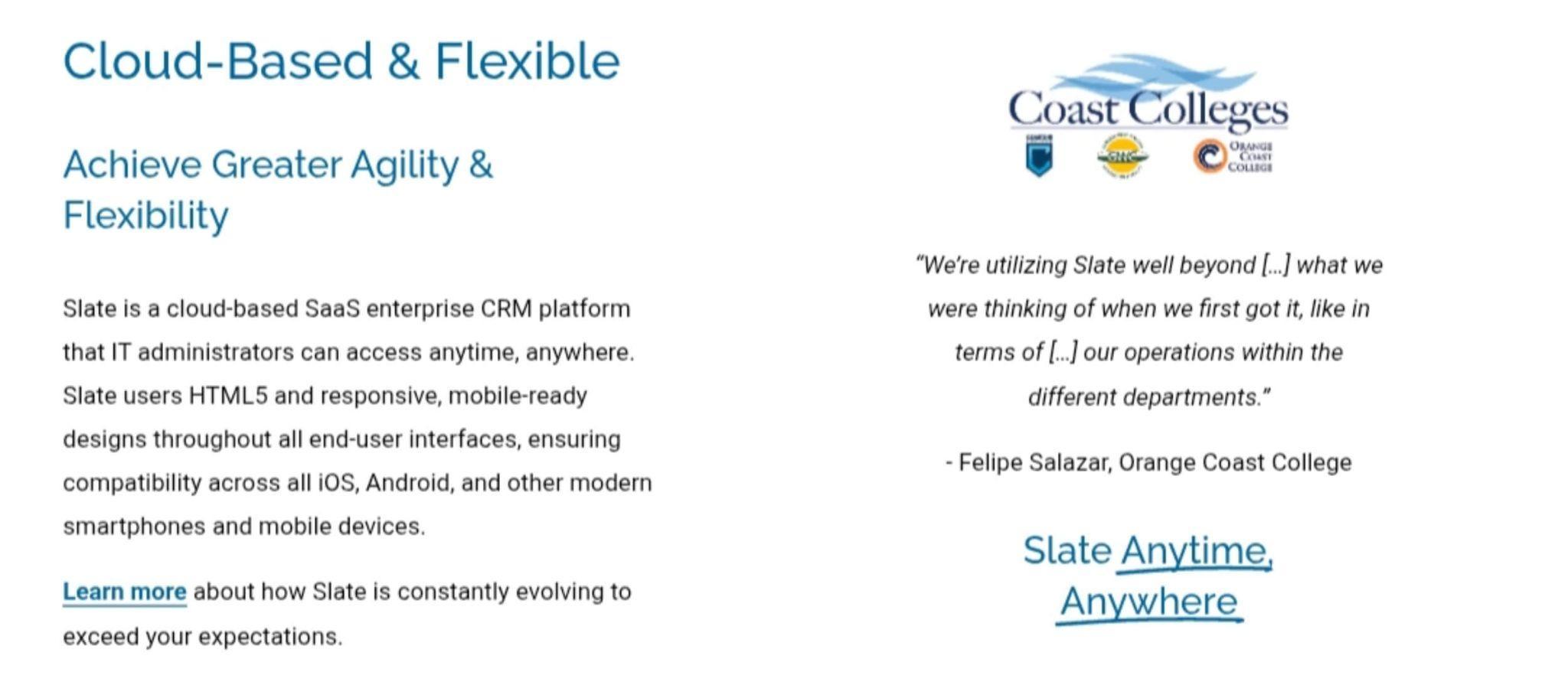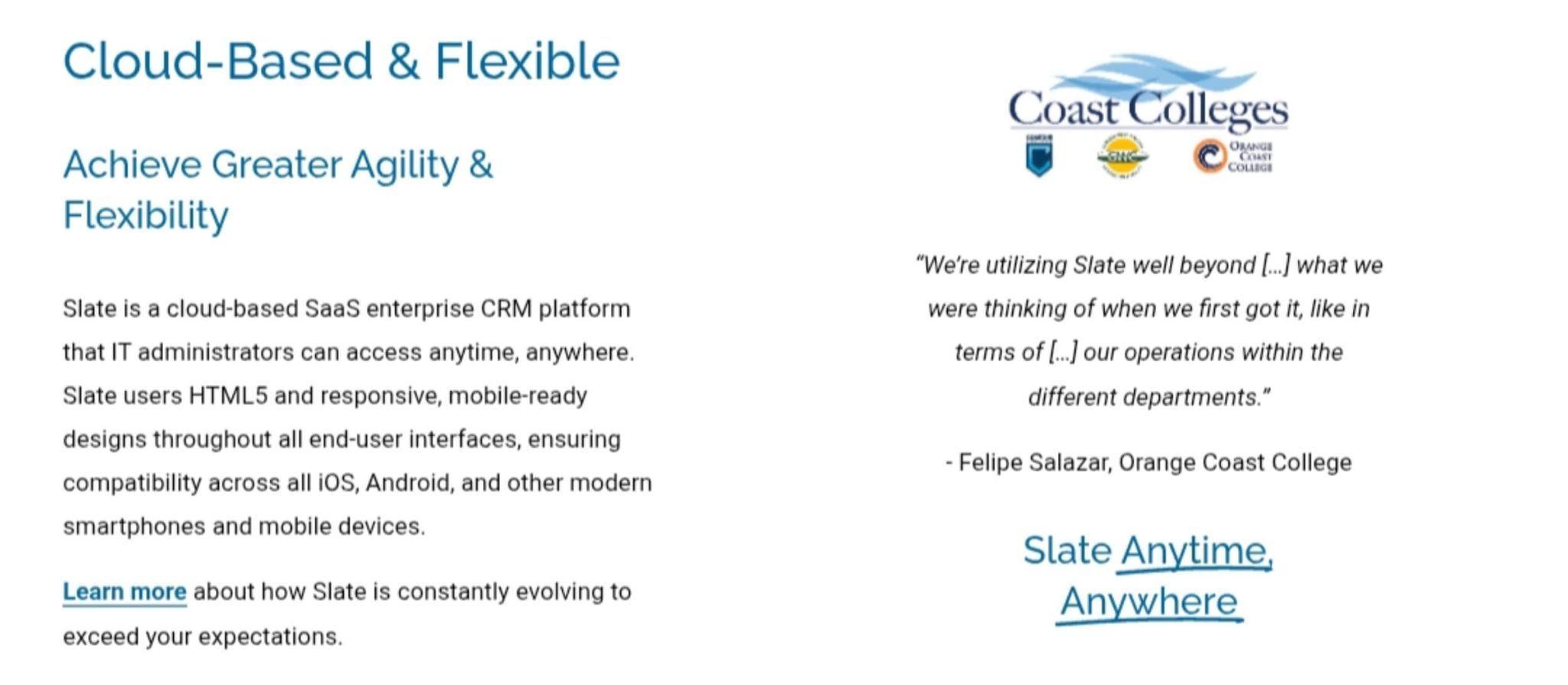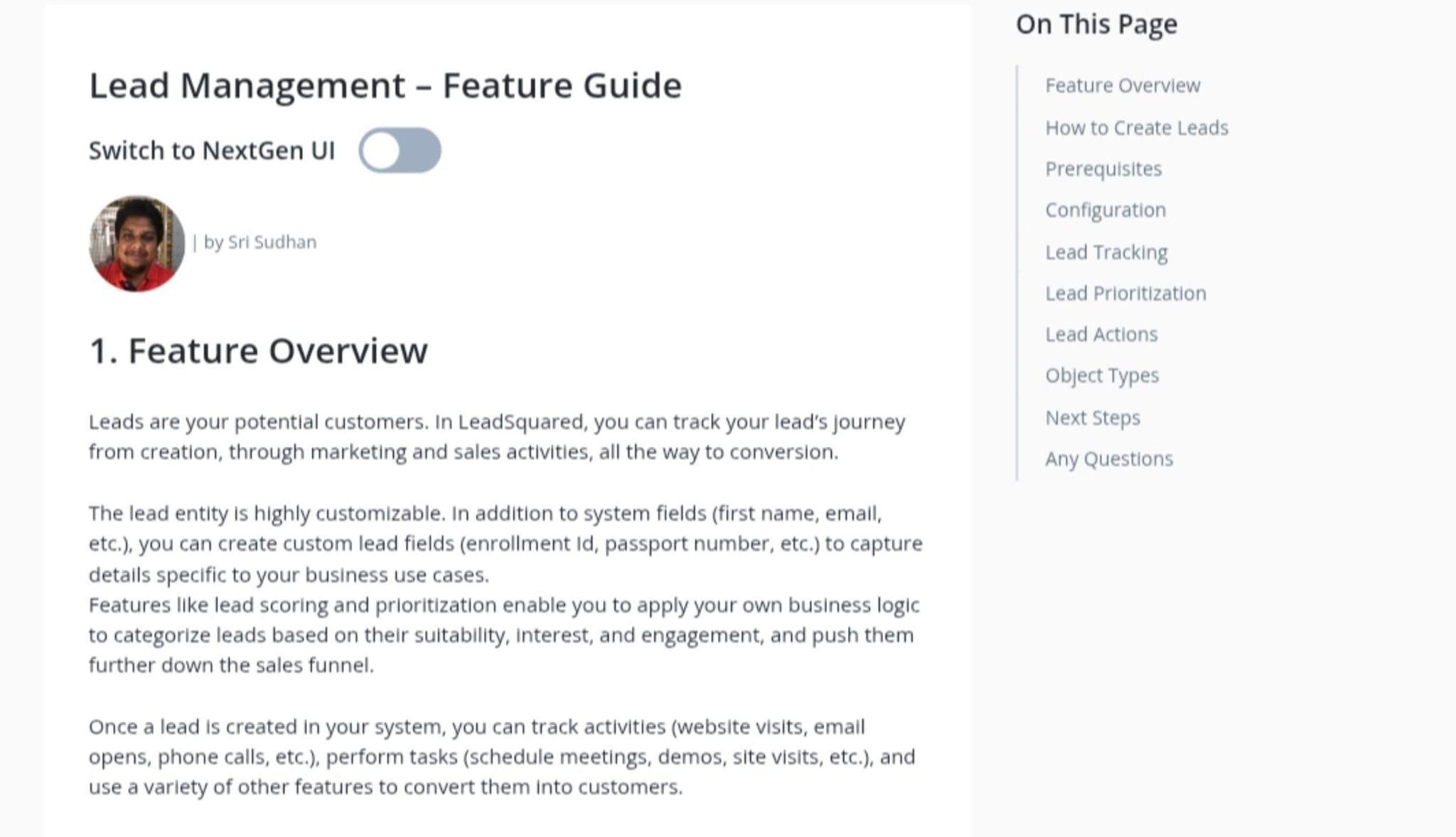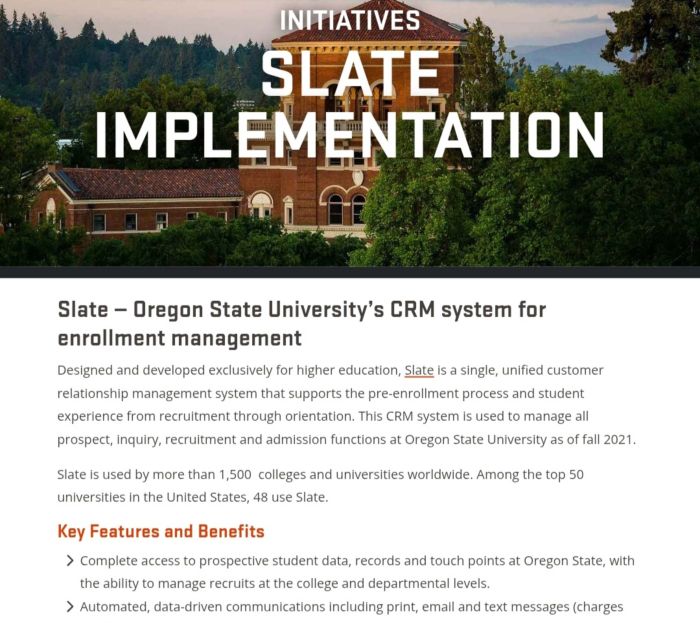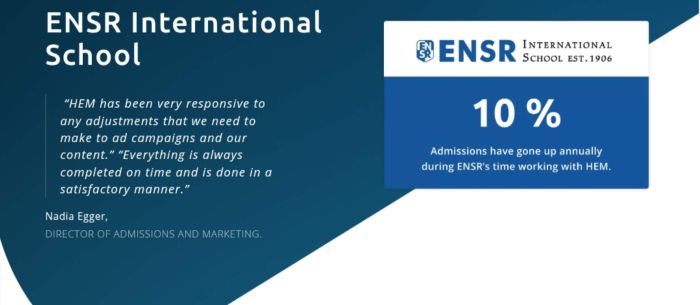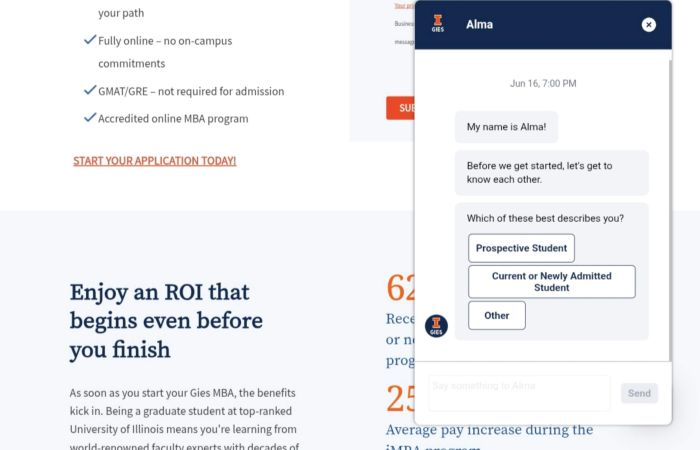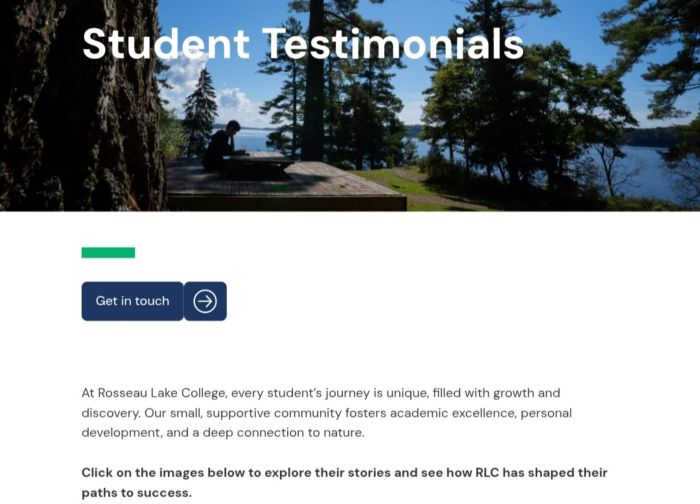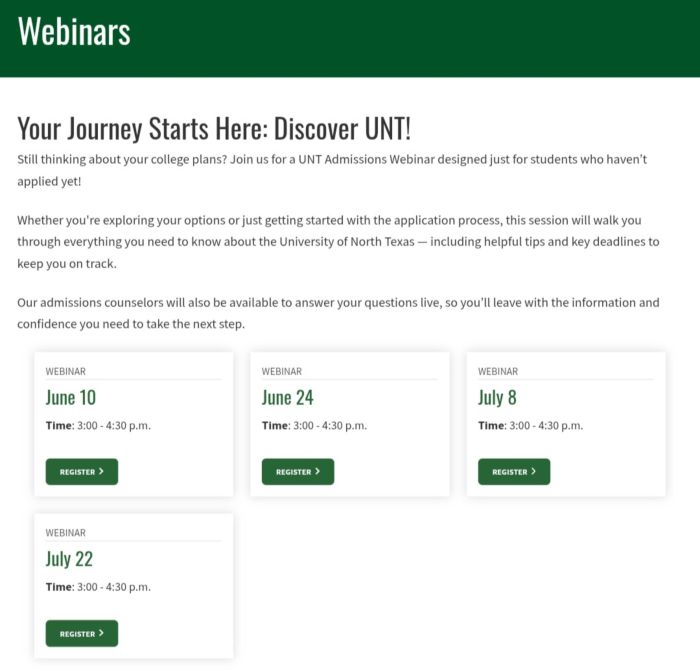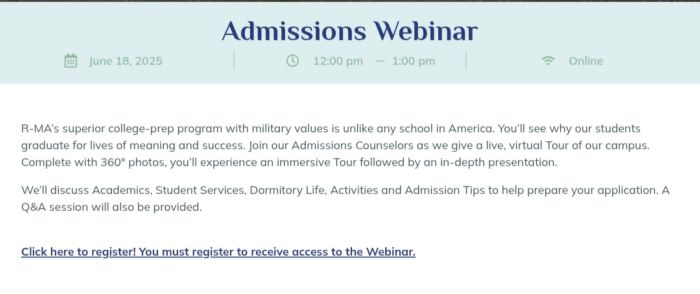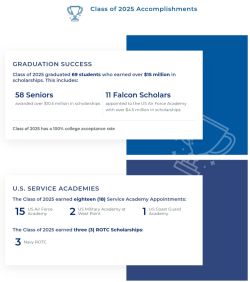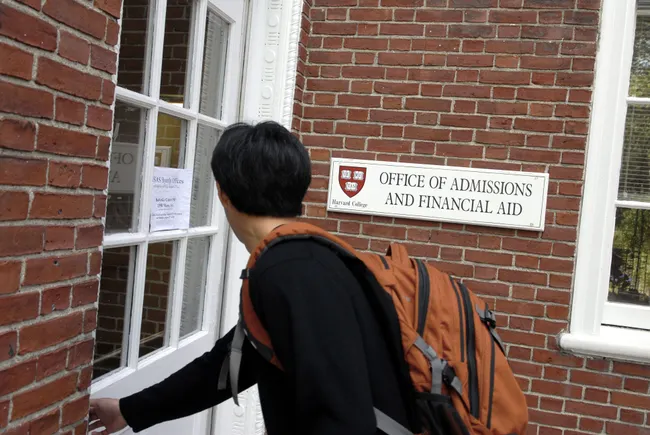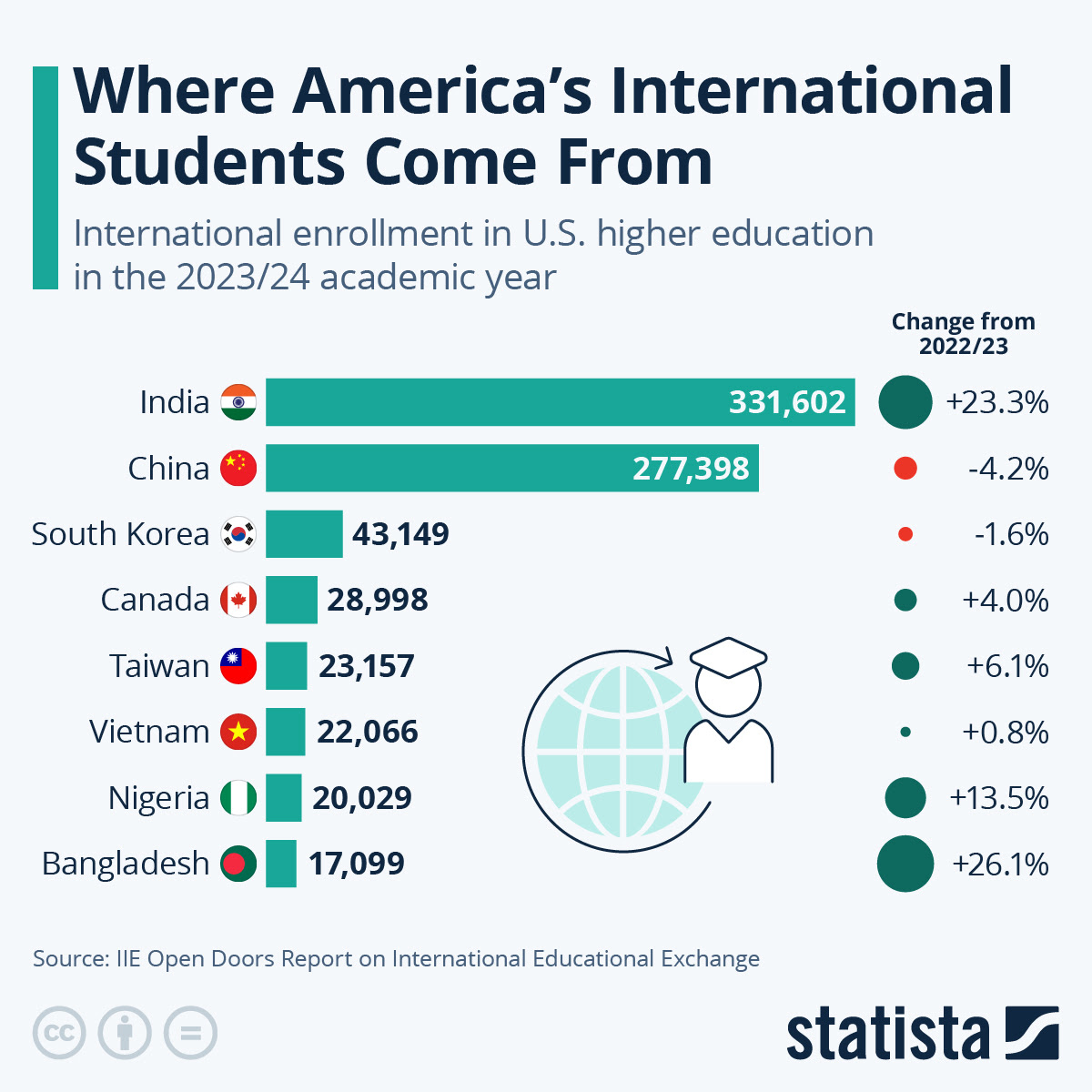Why Higher Education Leaders Can No Longer Afford to Wait on AI Adoption
Just a few years ago, AI in higher education was largely a topic for innovation labs and speculative white papers. Today, it has moved from the periphery to the absolute core of institutional viability, particularly in the critical areas of marketing and enrollment management. Leaders who still view AI as a future investment, rather than an immediate operational imperative, risk being outmaneuvered by a competitive landscape that is already embracing this transformative power.
The global AI software market is projected to hit an astounding $126 billion by the end of 2025. From healthcare to transportation AI is now an integral part of daily operations, with a significant 78% of organizations reporting AI usage in 2024—a sharp increase from 55% in 2023. Generative AI specifically saw its usage in at least one business function jump from 33% in 2023 to a staggering 71% in 2024.
The critical question is no longer if AI should be used, but how quickly institutions can integrate it to avoid not just falling behind but becoming irrelevant in a rapidly evolving landscape. The recent Marketing and Enrollment Management AI Readiness Report 2025, produced by UPCEA, the Online and Professional Education Association, and EducationDynamics, the only higher education agency building revenue and reputation that drives results, provides an in-depth look at institutional perceptions and AI readiness.
When Staff AI Adoption Outpaces Leadership
Here’s the uncomfortable truth: while your most proactive staff are already leveraging AI to drive results, many institutions are held back by analysis paralysis and strategic inaction. This is a direct threat to talent retention and competitive advantage.
While the general sentiment toward AI is increasingly positive, the report highlights that individual university staff are often far more receptive to using emerging technologies than their institutions. This leads to a significant gap between receptivity to AI in marketing and enrollment management and organization-changing operationalization of AI at an institutional level.
In 2025, 65% of survey respondents reported actively using emerging technologies like AI in their marketing and enrollment efforts, a substantial increase from 40% in 2024. However, this leaves over one-third of higher education marketing and enrollment management professionals on the outside of the AI revolution, falling further behind by the day. More troubling, only 61% indicated their institution is open to using these technologies. While the evidence suggests a growing openness to adopting critical technology, only 56 percent of institutions have a plan for upskilling staff in AI-driven tools.
Many respondents recognize a gap in their institutional AI readiness. A striking 56% of respondents don’t consider their institution a leader in implementing AI for marketing and enrollment management functions. When compared to peer institutions, 38% felt they were on pace, but 36% believed they were behind, with only 21% considering themselves ahead. This sentiment underscores a growing urgency to adopt AI, coupled with a pervasive feeling of being “behind the curve.”
AI is the Invisible Engine Driving Higher Ed
AI is a core component embedded directly in the recruitment, engagement and conversion platforms institutions already rely on. This widespread integration is transforming daily operations, as the 2025 survey highlights:
- Nearly two-thirds (65%) of institutions utilize AI-enhanced creative and design tools.
- Over half (51%) use social media management tools with embedded AI.
- Customer relationship management (CRM) systems and data analytics platforms with AI features are used by 31% of institutions respectively.
The perceived effectiveness of these AI-powered tools is on the rise. Content generation, the most widely used AI application, was rated most effective, with 47% deeming it “very effective” or “effective.” Other applications like content optimization (41% effective) and customized ad and message delivery (39% effective) also showed strong results.
Moving beyond perceived effectiveness, AI integration is yielding direct, quantifiable improvements across marketing and enrollment operations:
- 69% of respondents reported improved efficiency in their workflows due to AI.
- More than half (52%) observed an increase in the quality of their work.
- Nearly half (48%) believe AI tool integration has positively impacted their enrollment funnel.
The study identified key areas where AI is delivering the strongest return on investment (ROI) including customized ad messaging, lead generation and creative content development. Content optimization also stood out, with 36% of respondents noting a “very high” or “high” ROI. If nearly 70% see efficiency gains and almost half see a positive impact on enrollment, why aren’t more institutions fully embracing this?
The Future is AI-Expected
Modern Learners Are Already There
Student engagement is AI-dependent. For Modern Learners artificial intelligence is a fundamental tool in their college search, essential for information discovery. This profound shift in how the next generation interacts with information demands institutions meet this baseline expectation. Otherwise, they risk being perceived as outdated, irrelevant or having their reputation pre-determined by AI itself.
Modern Learners are using AI to seek information on:
- Tuition fees (57%)
- Course offerings (51%)
- Admission requirements (43%)
- Campus facilities (37%)
- Student reviews (35%)
This highlights the imperative for institutions to ensure their AI-accessible content, whether via chatbots or search optimization, directly aligns with what students are actively seeking.
What Leaders Are Envisioning
Looking ahead, institutional leaders envision even greater potential for AI-driven tools. Within the next two years, innovations such as:
…are expected to have a significant transformative impact on higher education marketing and enrollment management. These tools promise to address persistent challenges like the need for personalized outreach, improved insights into student behaviors and increased efficiency with limited resources.
The Barriers to AI Integration Progress
Despite the growing enthusiasm and proven benefits, institutions continue to face significant barriers to full AI integration. The top challenges cited by respondents include:
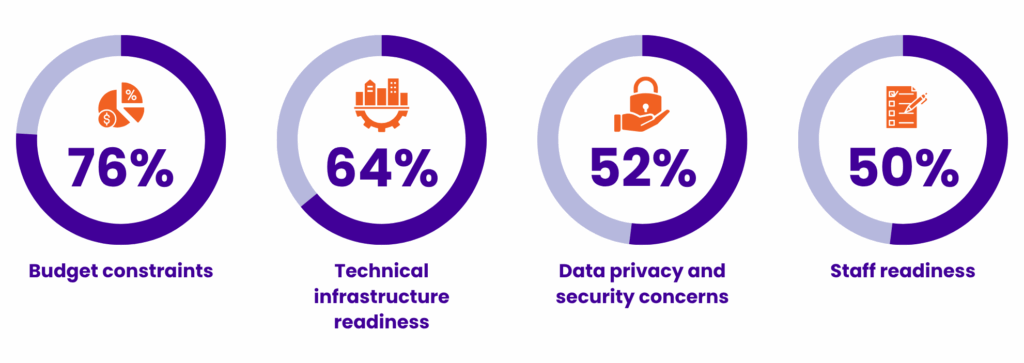
- Budget constraints (76%)
- Technical infrastructure readiness (64%)
- Data privacy and security concerns (52%)
- Staff readiness (50%)
Notably, these barriers have become even more pronounced since 2024, underscoring the urgent need for strategic investment and institutional alignment. Alarmingly, 44% of respondents reported their institution lacks a plan to upskill or support staff in adopting AI-driven technologies. This is a leadership failure, not a staff deficiency. Your most valuable asset, your people, are signaling a readiness for growth, yet nearly half of institutions are failing to provide the essential support.
The Only Action Plan You Need for AI Acceleration
The findings from the UPCEA and EducationDynamics study present clear implications for higher education leaders. The time for passive observation is over. Decisive action is required.
- Invest Where Impact Is Proven
Focus resources on AI applications already delivering proven ROI, starting with content creation, personalized ads and lead generation. Maximize every dollar in a constrained environment and accelerate returns and free up capacity for further innovation by allocating strategically.
- Upskill Teams
Invest in targeted training for both technical skills and change management is crucial to empower staff to effectively use AI tools and build confidence. Providing clear growth pathways tied to AI fluency can significantly improve staff engagement and retention, especially given that 34% of staff now report that their institution’s stance on AI impacts their likelihood of staying at that institution—a dramatic jump from just 1% in 2024. Furthermore, 90% of respondents view AI as a useful tool for their own professional growth. Failing to invest in AI fluency for your teams is effectively disarming them in a rapidly escalating competitive battle.
- Align Leadership with Operational Readiness
The nearly doubling of “lack of alignment with strategic priorities” as a major barrier (from 18% in 2024 to 33% in 2025) is an indictment of existing leadership structures. Institutional leaders must move beyond passive support and commit to actionable strategies for AI integration at an institutional level. This involves benchmarking adoption progress, embedding AI into strategic plans and allocating necessary resources to scale effective tools.
- Establish Institutional AI Governance
Without robust governance, AI adoption will be chaotic, risky and unsustainable. Creating governance structures that include marketing, enrollment, IT and data privacy leaders is essential. These groups should collaborate to develop responsible AI use policies, establish ethical guidelines and transparently communicate data privacy practices to prospective students. Only 49% of institutions currently have measures in place for ensuring student data security and privacy when using AI tools, though this is an improvement from 30% in 2024. Protect your institution’s reputation, ensuring ethical practice and safeguarding student data in an increasingly scrutinized environment.
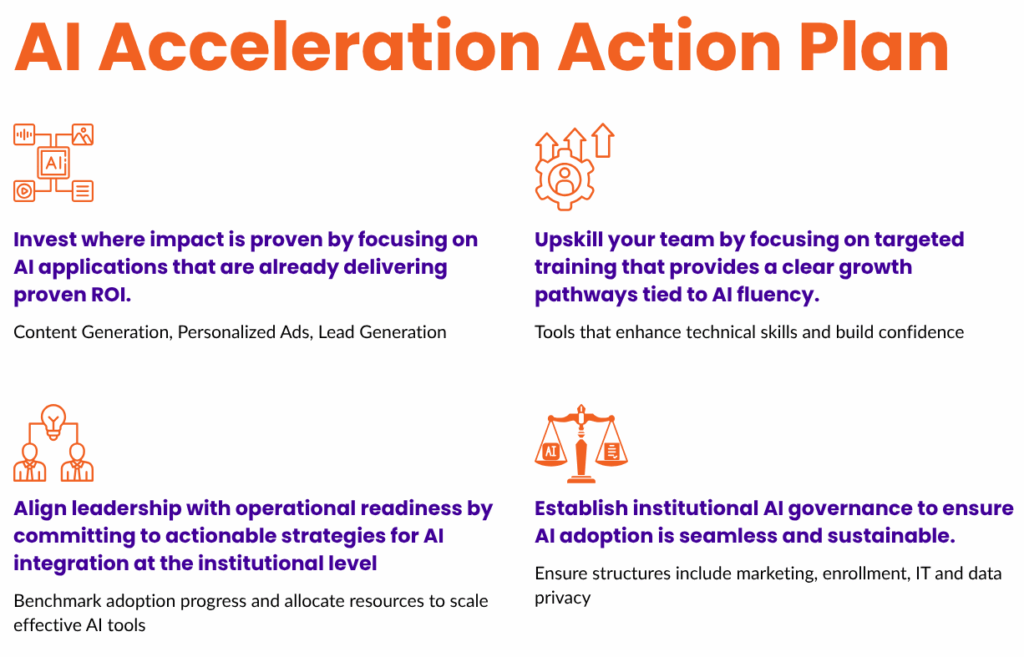
A Bet Your Institution Can’t Afford
The 2025 study is a revelation of present realities. AI is the operational backbone of competitive higher education marketing and enrollment management. Institutions that have adopted AI are reporting measurable gains in effectiveness efficiency and ROI. The report unequivocally reinforces that delaying implementation means facing the significant risk of falling permanently behind, not only compared to AI-embracing peers but also in meeting the evolving expectations of students and staff.
For higher education, the challenge now lies in converting receptivity into decisive action, and scattered AI adoption into a cohesive institutional strategy. EducationDynamics provides the expertise, data-driven strategies and solutions to help institutions navigate the complexities of AI integration, meet the expectations of Modern Learners and secure a competitive edge in marketing and enrollment management. The future of higher education is AI-expected, and with EducationDynamics, your institution can lead the charge.






